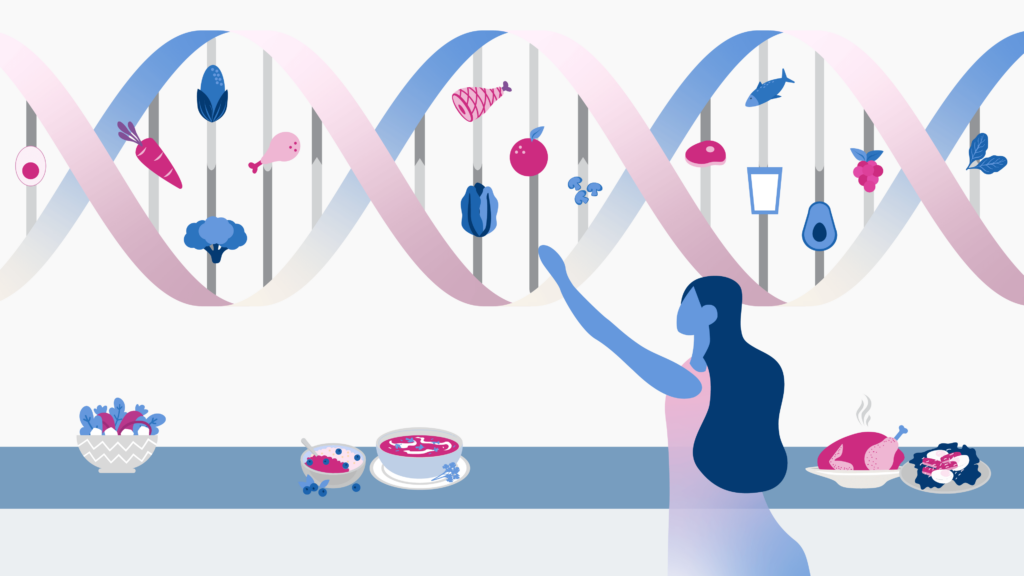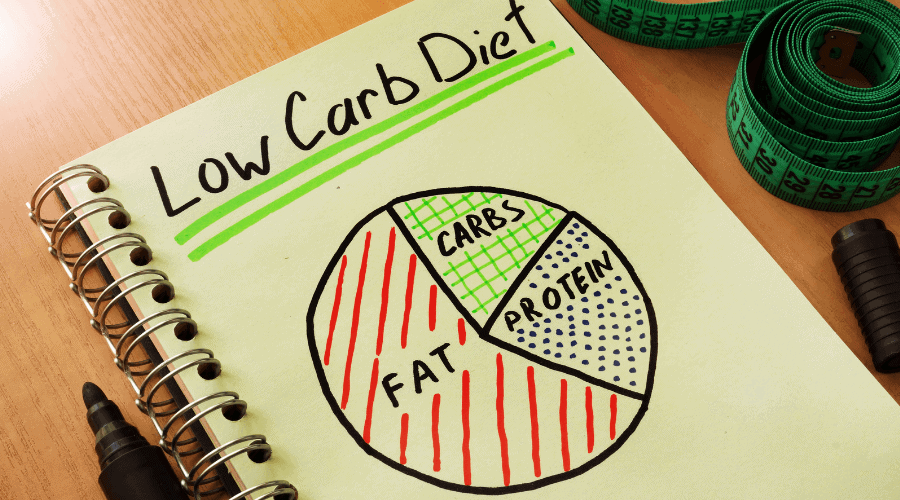When it comes to blood type diets, there are four different types – A, B, AB, and O. Each diet is based on what substances are best for each blood type. Dr. Peter D'Adamo created this diet, and it is said to help manage weight, improve energy levels, and reduce the risk of illness. The diet is based on the theory that your blood type affects your ability to digest certain foods and that eating the right foods for your blood type can help you to be healthier. For example, those with type A blood should avoid meat and dairy, while those with type B blood should eat more green vegetables. Read on to know what is theorized to be the best O blood type diet.
Overview: What Is The Blood Type Diet?
The blood type diet was created by naturopathic physician Peter D'Adamo.
The premise of the diet is that your blood type determines which foods are best for you to eat and which you should avoid.
There are four blood types - A, B, AB, and O - and, according to D’Adamo, each one requires a different diet plan.
The diet is based on the theory that certain lectins (proteins found in food) are incompatible with certain blood types.
Lectins can supposedly cause problems like weight gain, bloating, and fatigue.
By following the blood type diet, you can supposedly avoid these problems.
However, there’s no scientific evidence to back these claims.
The Different Blood Groups
Your blood group is inherited from your parents and falls into one of these four groups:
- O
- A
- B
- AB
Additionally, the presence of the Rhesus factor (that determines +ve or -ve) results in 8 different types of blood groups.
Some interesting facts about blood groups
- Most common: O+ve
- Least common: AB-ve
- Universal donor: O-ve
- Universal acceptor: AB+ve
What Is This Theory Based On?
D'Adamo asserts that blood types evolved as environmental conditions shaped food preferences and tolerances.
Blood Type Characteristics
O: Known as the "Hunter," those with this blood type are said to flourish on a diet high in protein-rich meats and low in carbs.
A: Believed to have evolved with the agricultural practices of early farmers, the “Agrarian” group is thought to benefit from a vegetarian diet.
B: The “Nomads” are set to thrive on a diet that includes both meat and dairy products since the blood group appears to have evolved with dairy farming.
AB: Described as the “Enigma” group, those with this blood type are thought to have a mix of A and B types' dietary requirements.
The O Blood Type Diet: What To Eat
What To Eat
Animal Proteins
The O blood type diet allows the consumption of most meat products, including cold-water fish.
- Lamb
- Beef
- Mutton
- Mackerel
- Cod
Dairy
D’Adamo recommends avoiding dairy products. But the diet allows the occasional consumption of certain dairy products like
- Butter
- Certain types of cheese
Nuts and Seeds
Nuts are a great source of protein and good fats, both of which favor O blood groups.
- Walnuts
- Almonds
- Hazelnuts
- Pumpkin seeds
Vegetables
Most vegetables are allowed in this diet.
- Sweet potatoes
- Tomatoes
- Artichokes
- Parsley
- Parsnips
- Red pepper
- Garlic
- Horseradish
- Kale
(list is not exhaustive)
Fruits
Some recommended fruits include
- Grapefruits
- Figs
- Plums
- Most berries (except ones mentioned in “Foods to Avoid”)
Beans
The most beneficial beans for the O blood type diet include
- Adzuki beans
- Pinto beans
- Black-eyed peas
Grains
While most grains are prohibited in this diet, some may be included.
- Rice
- Millet
- Amaranth
- Buckwheat
The food can be seasoned with spices and condiments like iodized salt, cayenne pepper, parsley, curry, cocoa, and honey.
Allowed beverages include water, wine, club soda, and tea.
D’Adamo says the diet should also be paired with vigorous aerobic exercise.
He also recommends supplements that target digestive issues.
What Not To Eat
People with O blood type tend to have higher levels of stomach acid.
Further, a reactive protein called lectin present in many grains interferes with immune responses, which can lead to unwanted inflammation and autoimmunity.
Let’s have a look at the foods to be avoided for O blood type.
Animal Proteins
The diet plan for people with type O blood excludes
- Pork
- Pickled herring
- Smoked salmon
- Goose
- Octopus
- Caviar
Dairy
Except for the ones mentioned under “Food to Eat,” all other dairy products should be avoided.
Nuts and Seeds
Despite nuts being high in protein and good fat, some don’t make the cut to this diet.
- Cashew nuts
- Pista
- Brazil nuts
- Peanuts
- Poppy seeds
Vegetables
O blood group may not tolerate certain vegetables of the Brassica family, like
- Cabbage
- Brussel sprouts
- Cauliflower
- Mustard greens
Nightshade family
- Eggplants
- Potatoes
Fruits
Specific fruits to be avoided include
- Oranges and tangerines
- Strawberries and blueberries
- Melons
- Avocado
- Rhubarb
Beans
The following beans should be avoided in this diet
- Kidney beans
- Lentils, including domestic, green, and red lentils
- Copper beans
- Tamarind beans
Grains
With the exception of the ones mentioned under “Food to Eat,” all other grains should be avoided.
While seasoning your foods, avoid species and condiments like pepper, mayo, tomato ketchup, vinegar, vanilla, pickles, nutmeg, and corn syrup.
Beverages to be avoided include beer, coffee, black tea, and distilled liquor.
Explore More: Is There A Connection Between Your DNA And Diet?
What you eat affects how your gene works, and the gene changes you have affect how you process the nutrients in your diet. These genetic variants also answer questions like why some people eat a lot and not put on weight, why certain people can’t consume dairy without experiencing gastrointestinal troubles, and why some people experience caffeine jitters after just one cup of coffee.
Get Your DNA-based Diet Insights Today
Does The Blood Type Diet Actually Work?
The scientific evidence supporting the theory behind the blood type diet is limited and contradictory.
Scientific Evidence
Many studies have been done to examine the validity of this diet, and so far, there is no solid evidence to support its claims.
One significant study on blood type diet was conducted by researchers from the University of Toronto, who analyzed data from 1,455 participants.
The study reported no connection between blood type and dietary effects on health markers such as body weight, cholesterol levels, and blood sugar control.
Hence, the researchers concluded that sticking to a healthy diet is what is important, across all blood types.
Further, they emphasized that no particular blood type benefits from one diet more than the other.
The same was also validated by a randomized controlled trial published in the Journal of the Academy of Nutrition and Dietetics.
The 16-week study subjected its participants to a low-fat vegan diet.
Results indicated a reduction in body weight due to increased insulin sensitivity and lower lipid levels.
A secondary analysis further revealed that there were no significant differences in outcomes among the various blood types.
Experts Weigh In
Experts in nutrition generally regard the blood type diet as having no sound scientific basis.
According to registered dietitian nutritionist Kathleen Zelman, it's a "gimmicky" approach to eating healthily.
She notes that although certain dietary components encourage better eating choices, such as consuming more fruits and vegetables, these advantages are not unique to any one blood type.
Dr. Ahmed El-Sohemy, who led the University of Toronto study, echoes this sentiment.
He asserts that dietary responses are less about blood type compatibility and more about an individual's adherence to healthy eating habits.
According to him, rather than broad advice based on ABO blood groups, effective diets should be tailored to each person's unique health demands.
In conclusion, scientific data does not support the idea that dietary demands are determined by blood type.
Many people may find success with the blood type diet because it places an emphasis on whole foods and reduces processed foods.
To achieve optimal health, a balanced strategy that emphasizes nutrient-rich diets customized to individual health situations is advised.
Risks Of Following A Blood-Type Diet
Despite some potential benefits, doctors and health experts are still apprehensive about it owing to the several drawbacks.
- Not backed by evidence: There’s no scientific root upholding blood-based diets. A review study reported that "no evidence currently exists to validate the purported health benefits of blood type diets."
- Unproved effectiveness: No research supports the weight loss benefit of blood-type diets.
- Health complications: Emphasis on a high intake of animal proteins may lead to other health problems.
- Use of supplements: The diet can be quite restrictive and suggests that using dietary supplements can help people meet their nutritional needs. However, not all supplements may qualify as a proper substitute for a healthy and balanced meal plan.
FAQs On O Blood Type Diet
What is blood type O allergic to?
According to a research study, type O exhibited the strongest reactions to dairy, eggs, gluten grains, and nightshades.
Which blood type lives the longest?
In a study conducted to examine the relationship between blood type and longevity, it was reported that 70% of people living past 100 years in the study group had O blood group.
This indicates that the O blood group could be associated with a longer span.
Studies reporting a protective effect of O type against heart diseases and certain types of cancer also support this theory.
What should blood type O eat for breakfast?
Since O blood type is advised to avoid dairy and most grains, flourless bread topped with almond butter and some seeds can be a good breakfast option.
An alternative dish could be scrambled tofu seasoned with cayenne pepper and parsley.
Summary: O Blood Type Diet
| Food | Allowed | Not Allowed |
| Animal products | Any meat except the ones listed under “not allowed” | Pork Pickled herring Smoked salmon Goose Octopus Caviar |
| Dairy | Butter Certain types of cheese | All dairy products except the ones listed under “allowed” |
| Nuts & seeds | Walnuts Pumpkin seeds Almonds Hazelnuts | Cashew nuts Pista Brazil nuts Peanuts Poppy seeds |
| Vegetables | Any vegetable except the ones listed under “not allowed” | Brassica family Cabbage Brussel sprouts Cauliflower Mustard greens Nightshade family Eggplants Potatoes Shiitake mushrooms Fermented olives Alfalfa sprouts |
| Fruits | Grapefruits Figs Plums Most berries (except ones mentioned in “not allowed”) | Oranges and tangerines Strawberries and blueberries Melons Avocado Rhubarb |
| Beans | Any beans except the ones listed under “not allowed” | Kidney beans Lentils, including domestic, green, and red lentils Copper beans Tamarind beans Navy beans Pinto bean |
| Grains | Rice Millet Amaranth Buckwheat Kasha Kamut Rye Spelt Barley | All grains except the ones listed under “allowed” |
| Spices & condiments | Iodized salt Cayenne pepper Parsley Curry Cocoa Honey | Pepper Mayo Tomato ketchup Vinegar Vanilla Pickles Nutmeg Corn syrup |
| Beverages | Water Wine Club soda Tea | Beer Distilled liquor Black tea Coffee |
Reference
- https://www.ncbi.nlm.nih.gov/pmc/articles/PMC5742377/
- https://pubmed.ncbi.nlm.nih.gov/31308303/
- https://pubmed.ncbi.nlm.nih.gov/16412386/
- http://medicalnewstoday.com/articles/319303#eating-for-your-blood-type
- https://www.ncbi.nlm.nih.gov/pmc/articles/PMC3497328/
- http://journals.plos.org/plosone/article?id=10.1371/journal.pone.0084749
- https://doi.org/10.3945/ajcn.113.058693
Expert-recommended Reads

Everything You Need To Know About A DNA Diet Test

Reviewing The Most Popular Diets Of 2024





